On our way to Tamworth over 10 months ago, one of our lunch stops was at Iron Knob. One of the residents told Kevin there was going to be a blast up on the ridge as they had recently started to work the mine again. We stayed around and were lucky enough to witness the blast! We decided to stay a bit longer and visited the Museum in the town and consquently became more aware of the history of the 'Iron Knob Mine'.
Our second visit to Broken Hill has enlightened us further on the 'Syndicate Seven' and the forming of BHP. The seven had broken up by the time iron ore was discovered at Iron Knob in 1899. Iron Knob was the birthplace of the 'Australian Steel Industry', so to complete the tri-fector we felt we needed to visit the 'Steel Mill at Whyalla'.
I remembered from Jenny's blog, that she had not enjoyed the tour very much, but she had also said lots of others had. Jenny also said in her comments "That we do all need to form our own opinions, when it comes to tours". Well my thoughts on the tour were that it was okay!
Because 'This goes with that' we were able to put some of the info to other bits of our touring and learning. There was lots of information and as we drove around I took down some notes on the iPad. My complaint was that the driver only accommodated those sitting on the left hand side of the bus. That was the side of the bus with the single seats and everything he stopped at, seemed to be on the left! I could definitely relate to Jenny's comment on the high seats and not knowing what he was pointing to. Surely he could have turned around and given those on the right hand side of the bus a look! Peter and I felt strongly enough about this, that we spoke with the manager of the Visitor Centre. She asked "If I would put it in writing because there is more chance of action happening, if it is in writing". So I did!
And we did find the geocache at the Visitor Centre too . That one was pretty easy.
Some of the facts and information we are now aware of, since the tour of the Steel Mill and watching DVD's at the Visitor Centre are:
Our second visit to Broken Hill has enlightened us further on the 'Syndicate Seven' and the forming of BHP. The seven had broken up by the time iron ore was discovered at Iron Knob in 1899. Iron Knob was the birthplace of the 'Australian Steel Industry', so to complete the tri-fector we felt we needed to visit the 'Steel Mill at Whyalla'.
I remembered from Jenny's blog, that she had not enjoyed the tour very much, but she had also said lots of others had. Jenny also said in her comments "That we do all need to form our own opinions, when it comes to tours". Well my thoughts on the tour were that it was okay!
Because 'This goes with that' we were able to put some of the info to other bits of our touring and learning. There was lots of information and as we drove around I took down some notes on the iPad. My complaint was that the driver only accommodated those sitting on the left hand side of the bus. That was the side of the bus with the single seats and everything he stopped at, seemed to be on the left! I could definitely relate to Jenny's comment on the high seats and not knowing what he was pointing to. Surely he could have turned around and given those on the right hand side of the bus a look! Peter and I felt strongly enough about this, that we spoke with the manager of the Visitor Centre. She asked "If I would put it in writing because there is more chance of action happening, if it is in writing". So I did!
And we did find the geocache at the Visitor Centre too . That one was pretty easy.
Some of the facts and information we are now aware of, since the tour of the Steel Mill and watching DVD's at the Visitor Centre are:
- The name of the iron ore mine we passed 90 kms south west of Coober Pedy is 'Peculiar Knob' and the ore is railed to Whyalla.
- Iron ore is taken out on barges and transferred to ships anchored out in Spencer Gulf. That is what was happening on Sunday afternoon when we arrived. This can only happen if weather permits.
- Dolomite is mined at Ardrossan on the Yorke Peninsula and shipped to the Steel Mill for use in the steel production. We did read about the mining of dolomite when we were at the Ardrossan Museum and that BHP had built the shipping terminal there. We didn't realise one of the places it was being shipped to was Whyalla.
- The iron ore trains are normally 1.8 kms long and have 60 carriages.
- OneSteel became Arrium Mining in 2012. The company exports 12 million tonnes of iron ore annually and manufactures 1.2 million tonnes of raw steel each year. There are 90 different grades of steel.
- The company manufactures 300,000 tonnes for structural and 100,000 tonnes for wheel products. It is the only manufacturer of railway line in Australia.
- The steel for the Perth arena came from Wyhalla as did the railway line for the Alice to Darwin railway.
- Arrium Mining is Whyalla's largest employer and engages in city projects. 1700 are employed and there are 1400 contractors. Approximately 300 workers are on site at any one time.
- The land we were travelling on had been reclaimed from sea and it covers 1,000 hectares. The township of Whyalla was established around the mining company.
- The on site gas plant generates 50 percent of the sites power requirements and these days they have had to become far more water conservative. They now use 40% more sea water than fresh water. They also have a dam on the edge of town catching water.
- The coal is shipped into the wharf that is on the site. There are 108 Coke Ovens. The coal comes from Queensland and NSW. It is baked for 12 to 18 hours. They then pour water on it after the baking to make the coke. Every 10 - 12 minutes this happens and they use 65,000 litres of water each time.
- The water for Whyalla is piped from the Murray River at Morgan. It comes via a pipeline across Spencer Gulf. The pipeline was completed in 1944. Prior to that water for Whyalla was barged across the gulf.
- Scrap metal is also used to make steel. One tonne of scrap metal means 5 tonne less of iron ore to make the steel.
- 2000 tonne of steel leaves the site each day and it is mostly by rail.
- 750,000 shell castings were made at the steel works for use in WW2.
- The population of Whyalla in 2014 is 22,000. They can never be confident that there is a definite future for the steel works. The community lives with constant rumours of its closure. If this was to happen they feel it would be the end of the town. Only a few days ago it made the news when the company said "It was being undercut on prices bydumped construction steel from Korea, Malaysia and Singapore".
- To help with dust and environmental issues the iron ore is now crushed at 'Iron Duke'. It is brought to the mill in a downstream ore beneficiation plant. Peter says that it is piped there and the tour guide did talk about piping. We passed 'Iron Duke' mine on the way to Port Lincoln.
- There is also an iron ore pellet plant that we were taken past on the tour. The pellets are made by melting and tumbling the ore.
We really did enjoy our time in Whyalla. The Discovery Park right on the foreshore and the caravan sites under the trees, right on the beach, are really lovely. We found it very relaxing and would certainly come back again. It would be an extra 50 kms to come from Iron Knob to Whyalla and then to Port Augusta and on to wherever. But we have been told since our visit, that it can be very windy in Whyalla. So I guess 'If the forecast is for lots of wind, then keep travelling'! 16 photos

 Whyalla, South Australia, Australia
Whyalla, South Australia, Australia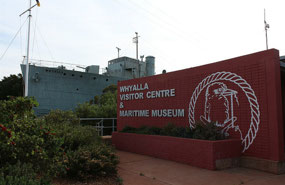
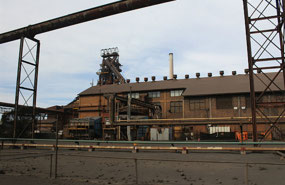
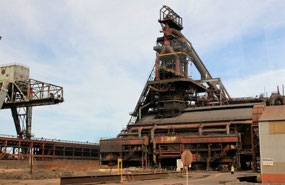
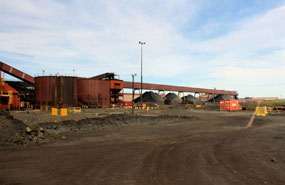
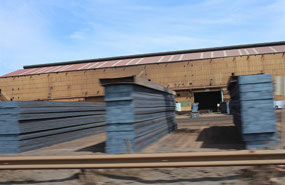

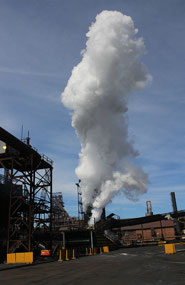

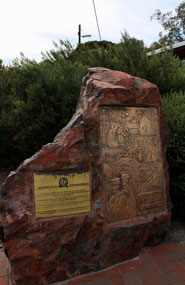
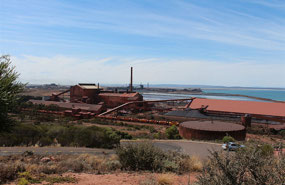
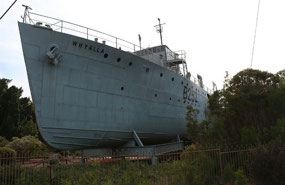
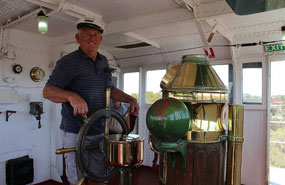
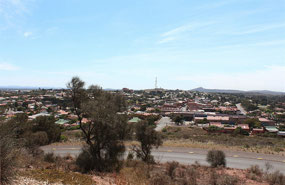
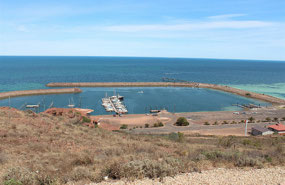
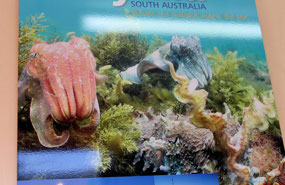
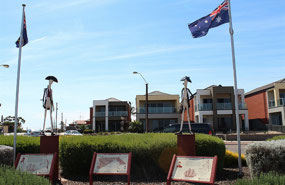
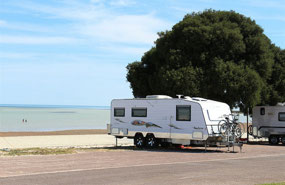
2025-05-22